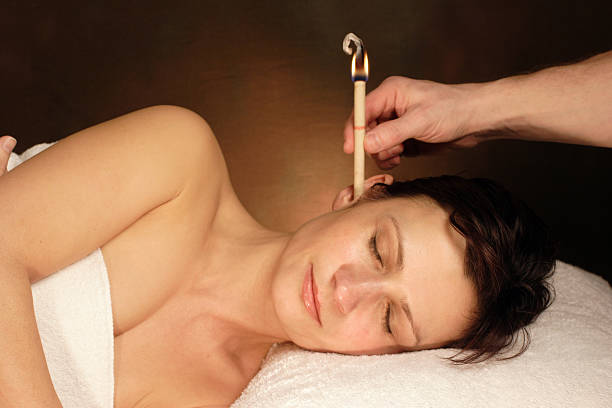Cleaner Ears
Ear Candling: Myths, Facts, and What You Need to Know
Ear candling, also known as Hopi ear candling, is a practice that has been around for centuries, with origins rooted in ancient cultures. Despite its long history, there’s a lot of debate surrounding its effectiveness and safety.
Ear candling involves placing a hollow, cone-shaped candle into the ear canal. The other end of the candle is lit, creating a vacuum that is supposed to draw out impurities and earwax from the ear. The candles are typically made from a combination of beeswax, paraffin, or fabric.
The practice of ear candling is often attributed to the Hopi Native American tribe, but there’s little evidence to support this claim. In fact, no historical records link the Hopi tribe to this practice. It is more likely that ear candling originated in ancient civilizations, such as Egypt, China, or Greece, where it was used for spiritual and therapeutic purposes

Common Myths About Ear Candling
Myth 1: Ear Candling Removes Earwax One of the most common beliefs is that ear candling effectively removes earwax. However, scientific studies have shown that the vacuum created by the candle is not strong enough to draw out earwax. In some cases, it can actually push wax deeper into the ear canal.
Myth 2: Ear Candling Detoxifies the Body Proponents of ear candling claim that it can detoxify the body by drawing out toxins. There is no scientific evidence to support this claim. The body has its own natural detoxification processes, primarily carried out by the liver and kidneys.
Myth 3: Ear Candling Improves Hearing Some people believe that ear candling can improve hearing by clearing out blockages. However, any improvement in hearing is likely due to the temporary removal of excess earwax, not the ear candling process itself.
The Risks of Ear Candling
While ear candling is marketed as a natural and safe remedy, it carries several risks:
- Burns: The lit candle can cause burns to the ear, face, or scalp if not handled properly.
- Ear Damage: The wax from the candle can drip into the ear canal, leading to blockages or even perforation of the eardrum.
- Infections: If earwax is pushed deeper into the ear, it can lead to infections and other complications.
Safer Alternatives to Ear Candling
If you’re looking to remove earwax or improve ear health, there are safer and more effective methods:
- Over-the-Counter Ear Drops: These drops can soften earwax, making it easier to remove naturally.
- Irrigation: A gentle stream of warm water can help flush out excess earwax.
- Professional Cleaning: If you’re experiencing discomfort or hearing loss due to earwax buildup, it’s best to consult a healthcare professional.
Common Myths About Ear Candling
Lorem ipsum dolor sit amet, consectetur adipiscing elit. Ut elit tellus, luctus nec ullamcorper mattis, pulvinar dapibus leo.
